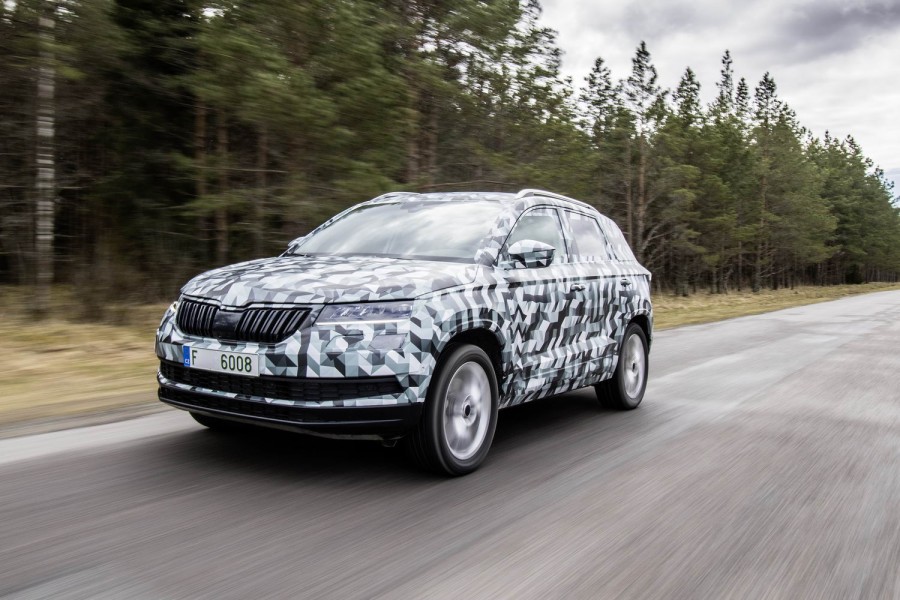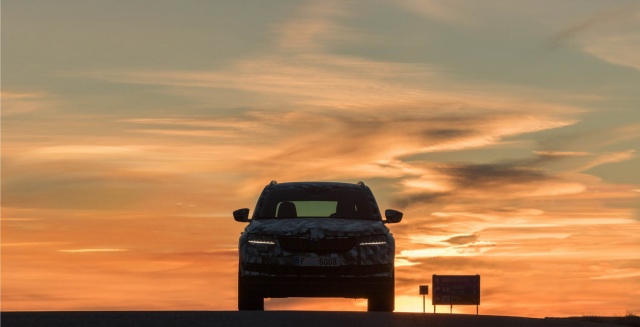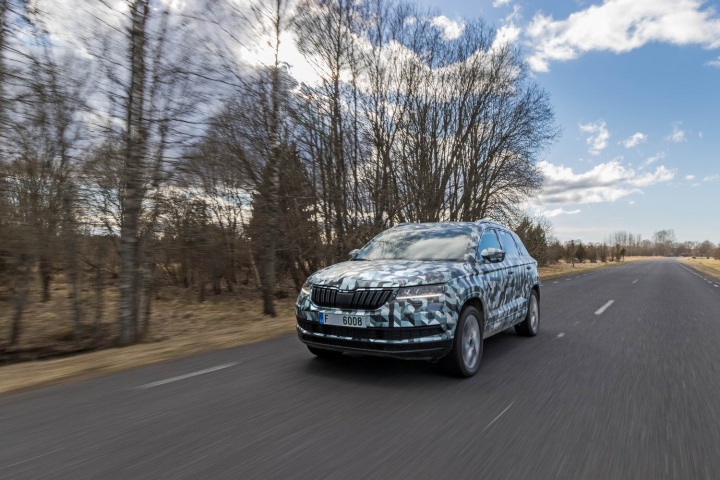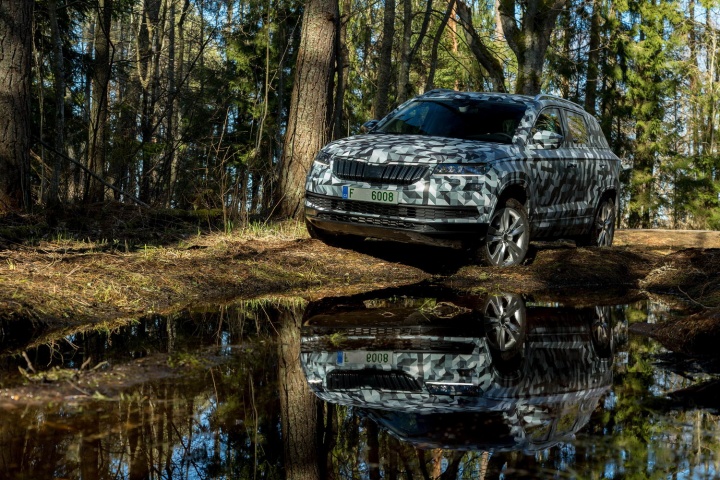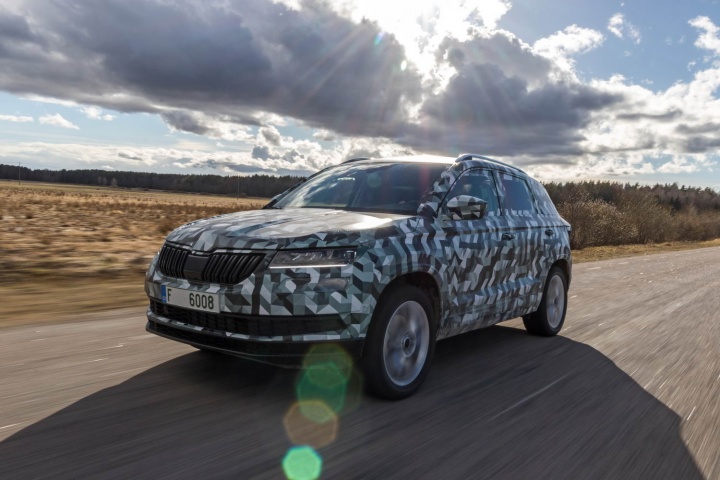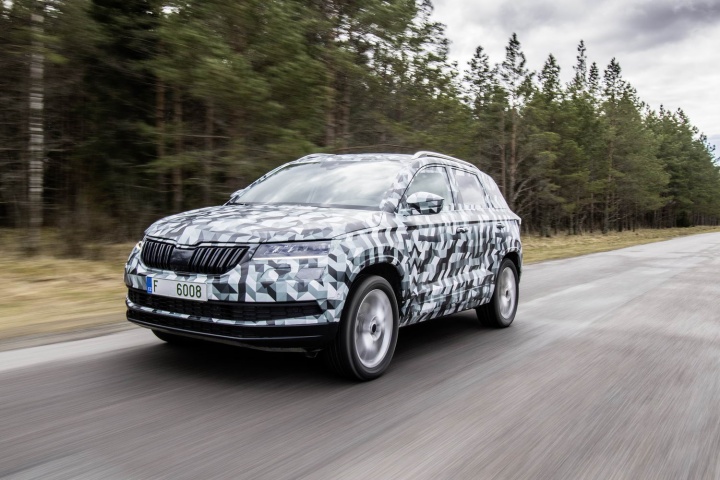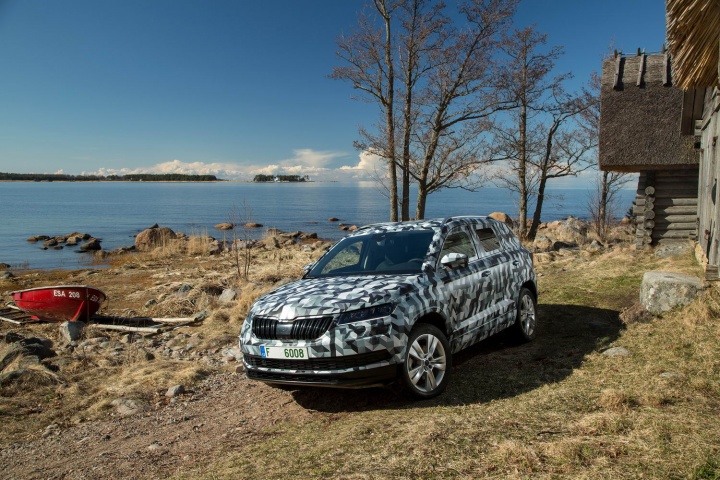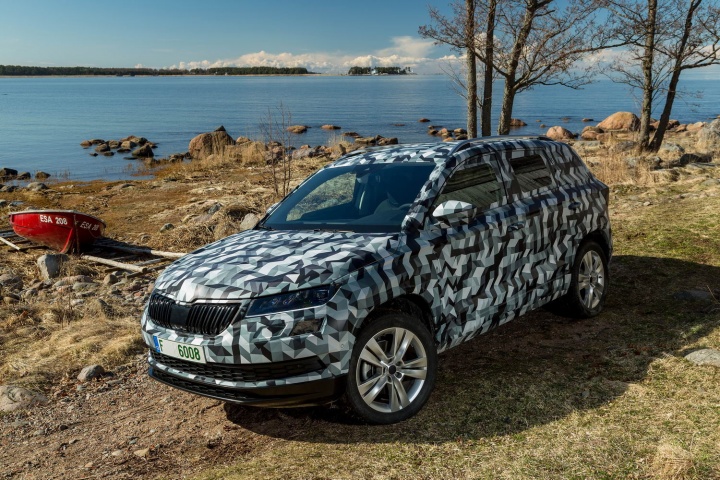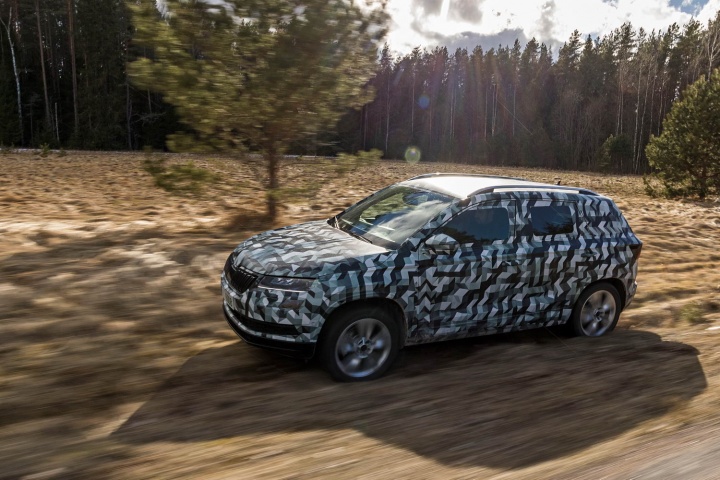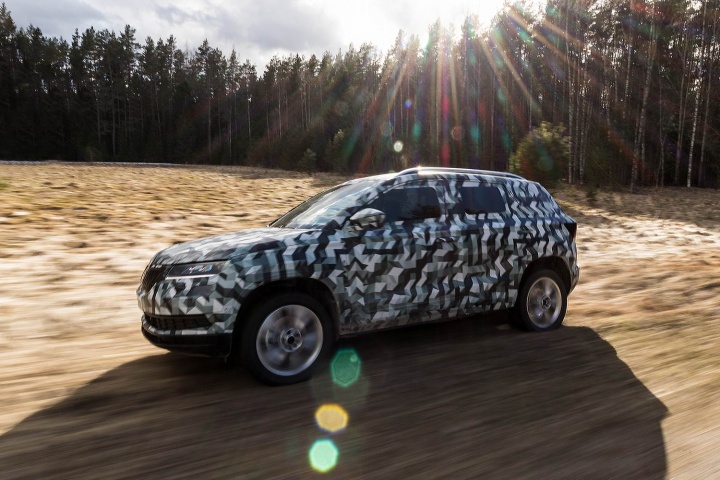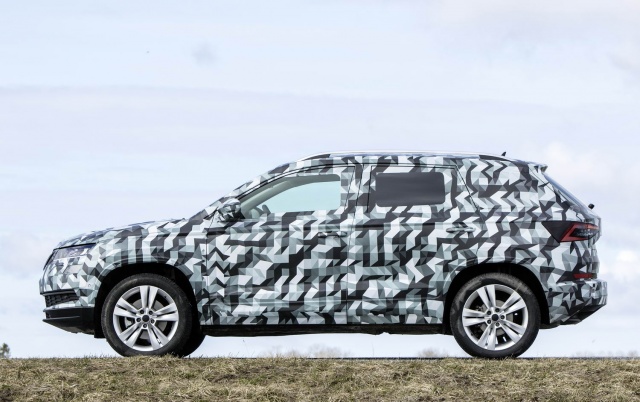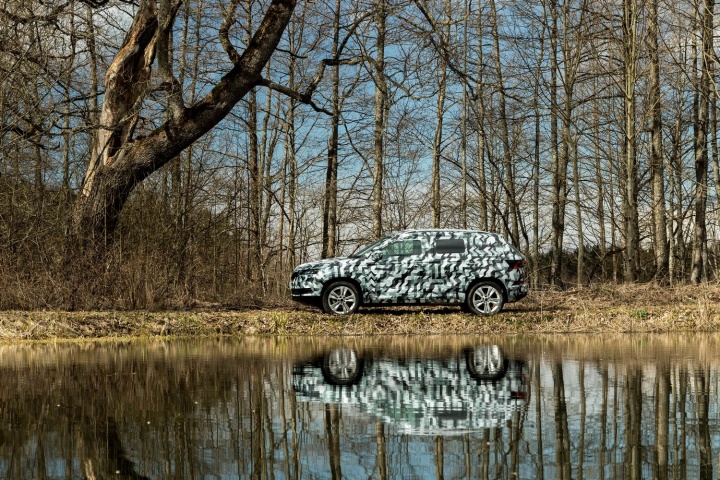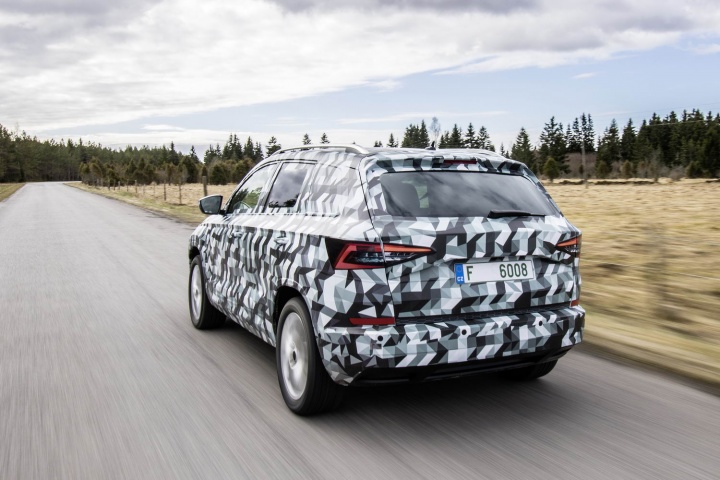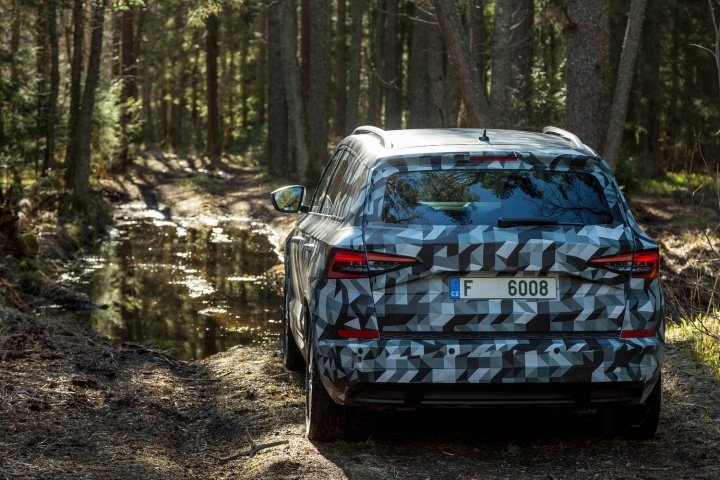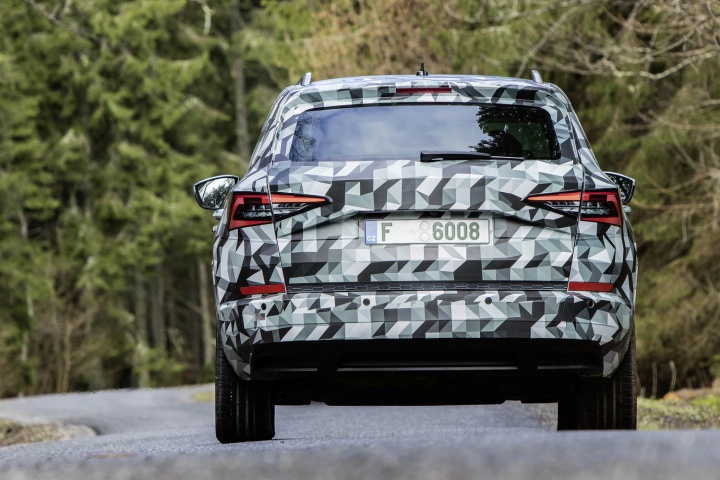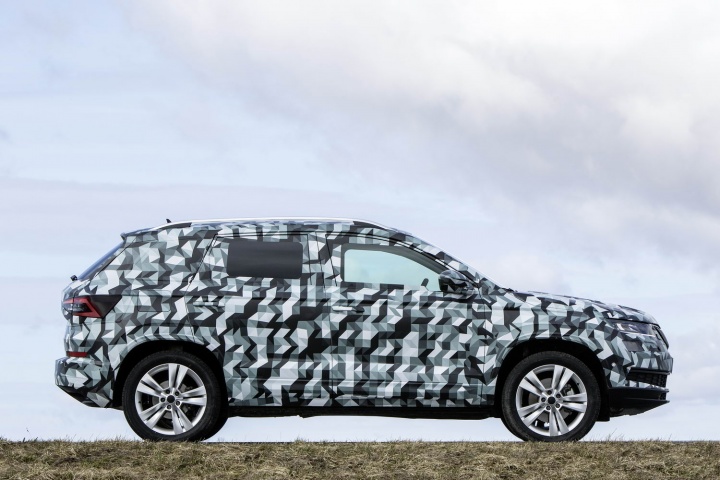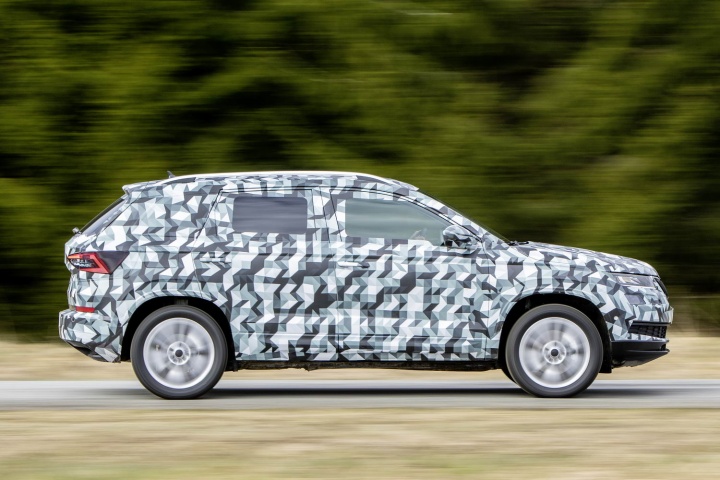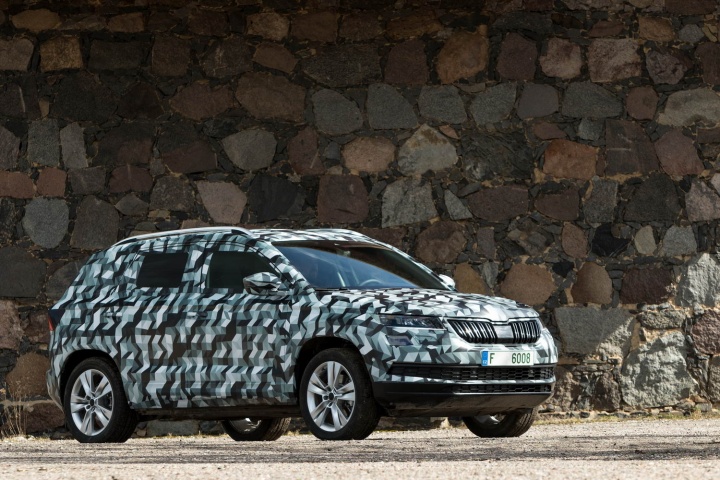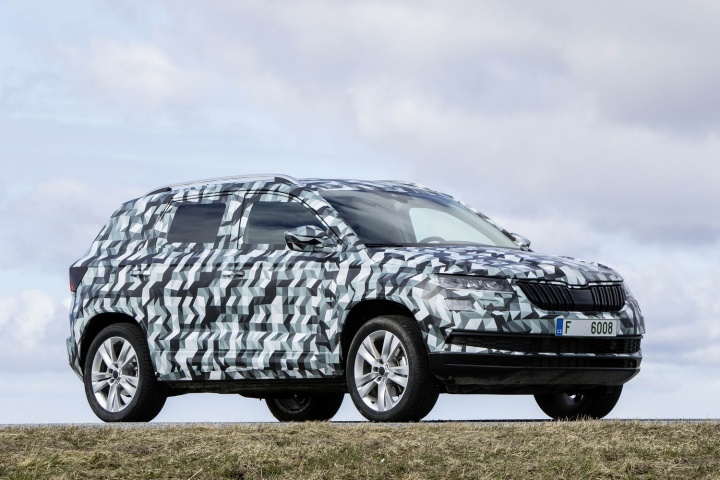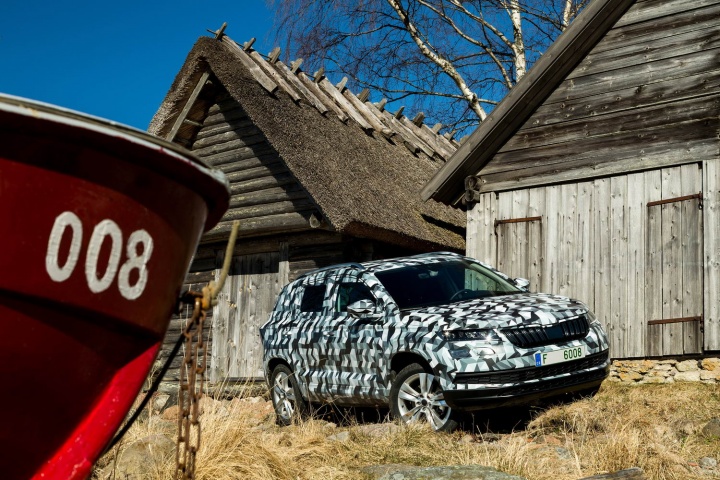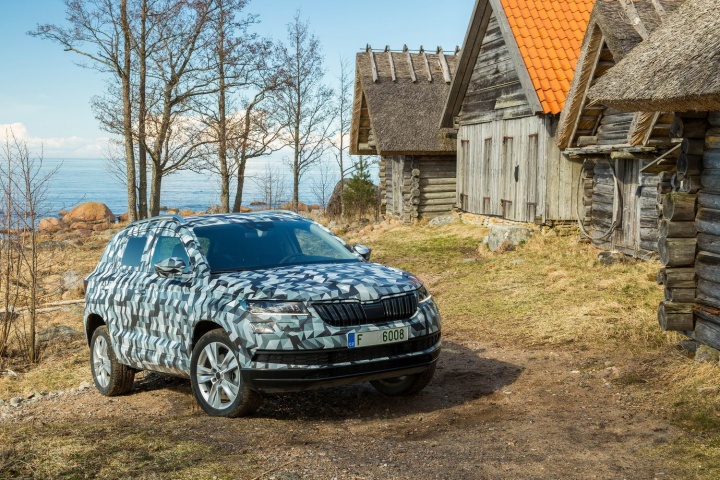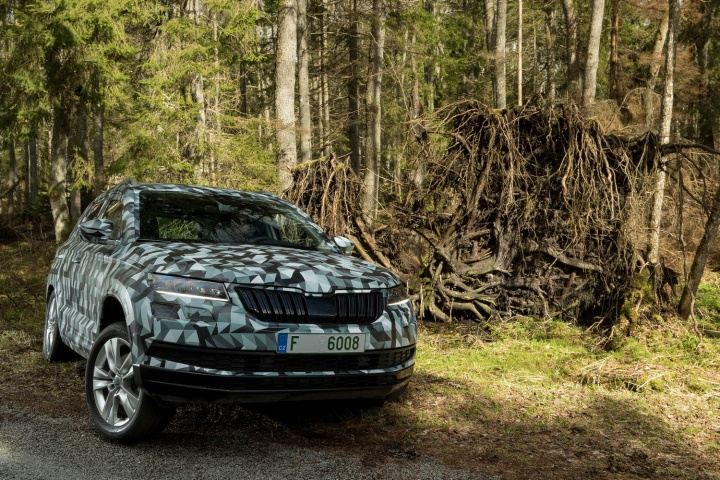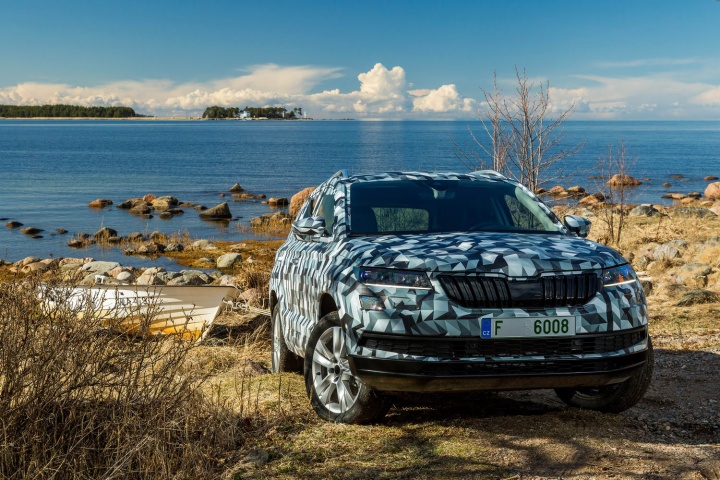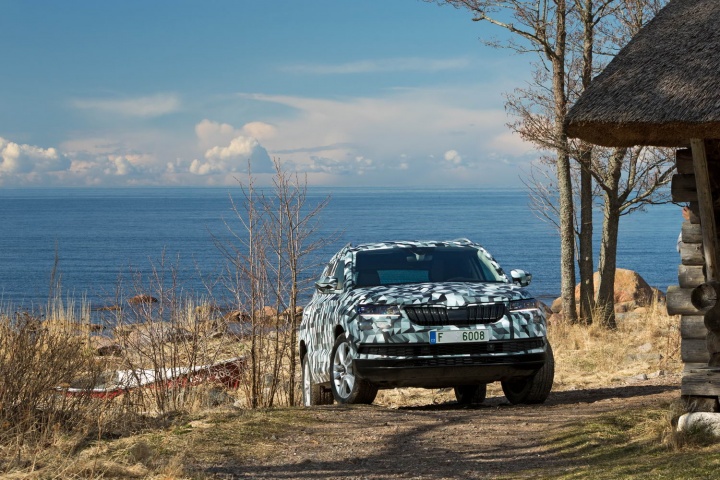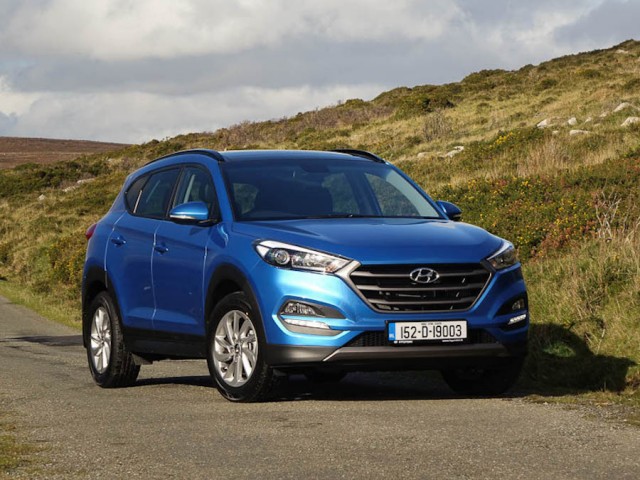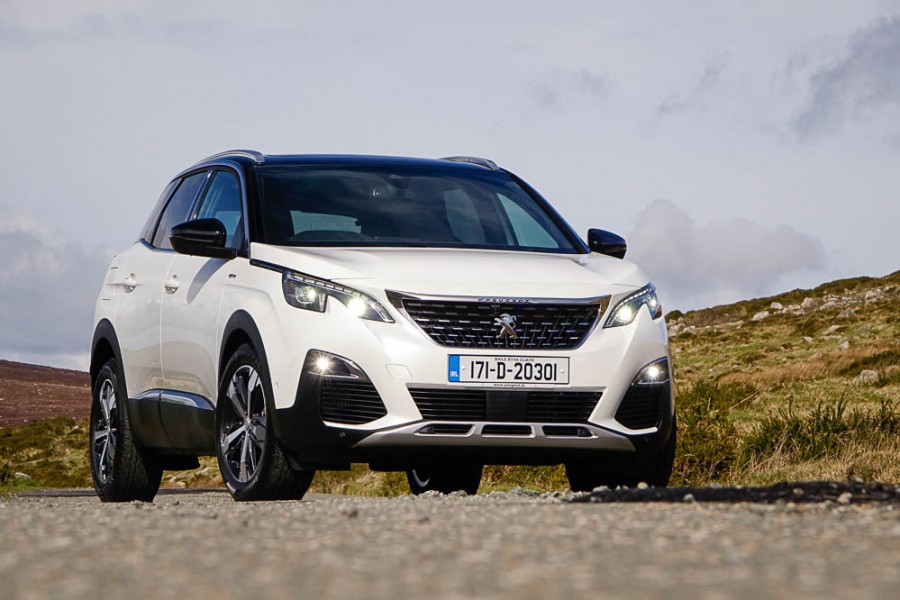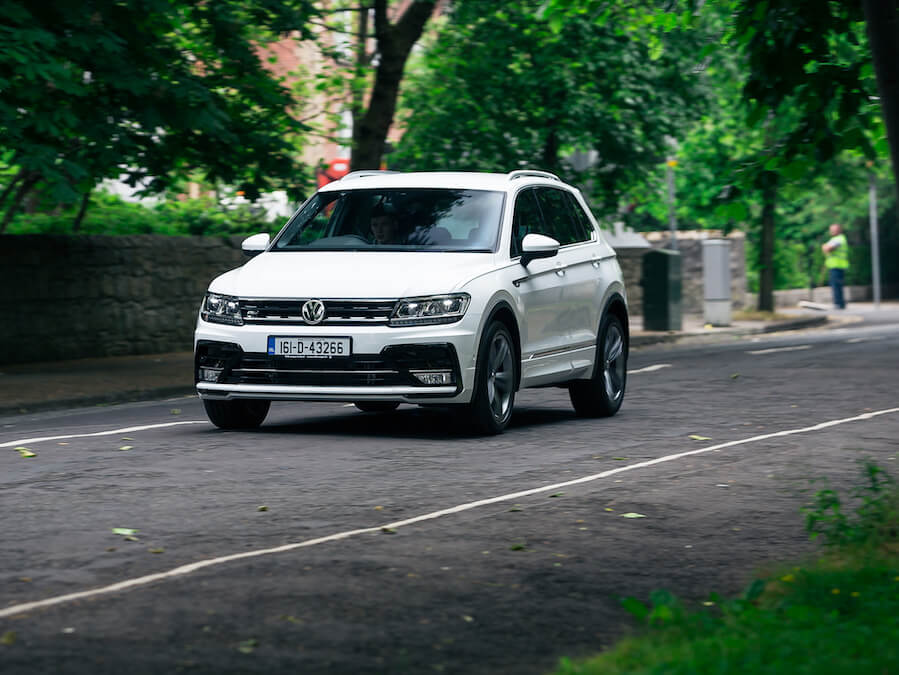The Karoq is the second phase of Skoda's new SUV strategy, and having applied what it already has achieved with the Kodiaq, this new compact SUV (or crossover, depending on how you label these things) looks set to give the Czech company's rivals something to worry about.
In the metal
If you look closely enough and try your best to ignore the multi-coloured camouflage you'll see the true shape of Skoda's all-new compact SUV. It's called the Karoq, and it's very much the junior version of what is currently one of the hottest SUVs on the market, the Kodiaq. The names are similar and so too are the looks. We've seen an undisguised version and can confirm that it looks every bit as sharp.
Proportionally it works well, too, as this is strictly just a five-seat model. Though the boot capacity is so vast, it's not beyond the realms of possibility that Skoda could fit two more seats in there with minimal engineering. In total, the boot swallows up 521 litres, and if you fold the rear seats down that increases to 1,630 litres. The exterior measures in at 4,382mm long and 1,841mm wide. With a height of 1,605mm, the new Skoda is the perfect size for the compact SUV segment, which is an impressive feat considering how spacious it is inside. A combination of minimalist dashboard design, thanks in part to the optional 9.2-inch infotainment screen, and a new seat design make the front of the cabin feel spacious and comfortable. Even more impressive than the large touchscreen is the introduction of Skoda's first ever fully digital instrument display. This 12.3-inch unit is the same hardware that was featured in Audi and Volkswagen models, but gets its own distinct look through the screen graphics. LED fuel and temperature indicators on either side of it are a lovely design touch, as well.
Many will find the rear passenger space one of the most impressive aspects of the Karoq. Generous in both head- and legroom, it also benefits from wider door apertures than the Skoda Yeti had, to aid egress and ingress.
Driving it
Although the cars we drove weren't production ready, they were in the final stages of sign-off, so it gave us an accurate representation of what the finished car will be like. The Karoq is built on the same MQB platform that underpins so many cars within the Volkswagen Group, the closest of which is the Volkswagen Tiguan. Due to this, there are some similarities in how both cars drive, though the suspension in the Skoda seems to be just that little bit softer. Through bends there is a touch more body roll, but it never feels lacking in composure.
The majority of our drive was on light off-road trails and poor road surfaces, leaving plenty of opportunities to expose any chinks in the Skoda's armour. The Karoq soaks up poor surfaces with ease, even on the standard passive suspension. It has been confirmed that soon after the car is launched it will be offered with a Dynamic Chassis Control (DCC) system, which allows for adaptive dampers to further isolate the cabin from bad road surfaces or firm up to suit more enthusiastic cornering.
Skoda has made different drive modes available, as well, and in the case of four-wheel drive models like that tested here, that includes a dedicated Off-Road function. The usual settings such as Eco, Normal, Sport and Individual are present and have the typical effects on steering and throttle response - and gear changes in the case of the automatic transmission.
The electrically assisted power steering, even when left in Normal mode, feels nicely weighted and has a good sense of accuracy to it. When you do decide to push on that bit faster the Sport mode adds just a little more weight to the steering. It's fine when you're covering ground more quickly, especially on a winding road, but for everyday driving it's best to switch back to Normal.
A good range of engines should suit most buyers, and we sampled the 1.5-litre TSI petrol and 2.0-litre TDI diesel, the latter of which was in its 150hp guise. There will be a 1.6-litre TDI available with a manual gearbox as well, but we reckon that the larger engine will make for a better option. Working in tandem with the DSG transmission it smoothly goes through the gears and helps to highlight just how refined the whole driving experience is set to be in the production versions. Sound insulation and an acoustically optimised windscreen contribute to blocking out any potential din from the diesel engine and the road.
What you get for your money
Official pricing is still some way off from being confirmed, but when the Karoq does go on sale, it is expected to be priced similarly to how the Yeti was. Skoda has introduced more technology and improved infotainment systems, and these will obviously have an effect on the price.
The car will feature seating for five with the rear seats comprising of a 60:40 split capable of folding flat. Both of the outer rear seats will be ISOFIX equipped and can be heated as an option. Alternatively, Skoda will offer the option of its VarioFlex rear seats. Made up of three individual chairs, they can be removed in any combination and adjusted. With the centre seat taken out, the outer seats can slide in towards the centre of the cabin to increase elbow room, while the whole thing slides fore and aft too.
Summary
With its sharp looks and spacious interior, the new Skoda Karoq is sure to be one of the most sought-after SUVs of 2018 when it begins its first full year of sales in Ireland. Some may mourn the end of the Yeti era, but the Karoq has the potential to set a whole new standard, not just for Skoda, but the segment as a whole.

